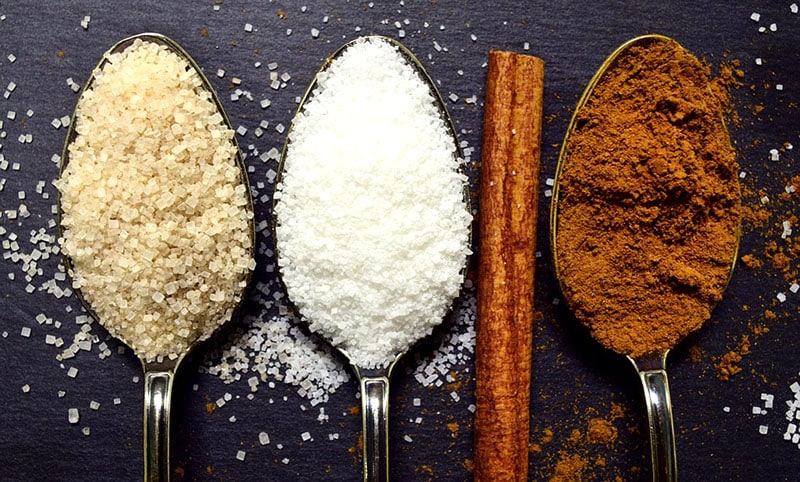 Are added sugars sabotaging your healthy eating efforts? Excess added sugar consumption has been linked to obesity, heart disease, and diabetes in America. The biggest sources of added sugars are soda, energy drinks, and desserts. But even if you aren’t eating ice cream sandwiches all day long, you may not realize the hidden added sugars that you are consuming on a regular basis.
Are added sugars sabotaging your healthy eating efforts? Excess added sugar consumption has been linked to obesity, heart disease, and diabetes in America. The biggest sources of added sugars are soda, energy drinks, and desserts. But even if you aren’t eating ice cream sandwiches all day long, you may not realize the hidden added sugars that you are consuming on a regular basis.
There are two main types of sugars in the diet—naturally occurring sugars and added sugars. Naturally occurring sugars are found naturally in foods like fruit or milk. Added sugars are sugars and syrups that are put into foods and beverages when they are being processed or prepared. Added sugars provide zero nutritional value, and unfortunately, boost the caloric content of foods. Empty calories in added sugars can lead to unnecessary weight gain and poor glycemic control.
The American Heart Association provides daily added sugar limits for men and women. Specifically, women are advised to consume no more than 6 teaspoons or 25 grams of added sugar per day; men are advised to consume no more than nine teaspoons or 36 grams of added sugar per day. To help put things in perspective, one can of cola soda has eight teaspoons of added sugar. Research shows that Americans are far exceeding these guidelines, consuming about 17 teaspoons of added sugar each day.
By 2021, all food labels will be required to list added sugars under the total sugars potion of the label. This specification will help consumers identify the portion of added sugars in a food, and distinguish how much of the sugar in the food is natural. Try your best to become a food label “detective” and really dive into the nutrition label. When looking at the ingredients list, make sure you aren’t missing any potential sweeteners. Names for added sugars on labels include, but are not limited to, brown sugar, corn sweetener, corn syrup, fruit juice concentrates, high fructose corn syrup, invert sugar, malt sugar, molasses, white granulated sugar and syrup.
Many breakfast foods tend to be full of added sugars. For your first meal of the day, it’s important to choose foods that nourish and energize the body. Try to choose whole, unprocessed breakfast foods if possible. Skip sugary frosted cereals and opt for breakfast cereals with less sugar. A good rule of thumb is that a breakfast cereal should not exceed 10 grams of sugar; if you can find a variety with six grams of sugar or less, that is even better.
Instead of buying flavored yogurt or oatmeal, purchase plain varieties and naturally sweeten with fresh fruit and cinnamon. Add sliced nuts for extra protein, and include a drizzle of honey if you are still craving something sweet. You won’t be adding nearly as much sugar as pre-flavored varieties carry.
Some of us may think that artificial sweeteners are the answer to this sugar dilemma, but did you know that artificial sweeteners are more than 200 times sweeter than regular sugar? These artificial sweeteners hyper-stimulate our taste buds and mess with the taste receptors in our brain. The solution is to eat whole, natural, real, unprocessed foods. Indulge in the real thing, but in moderation. Give your taste buds at least three weeks to adapt to less added sugar and sweeteners—your body will thank you.
Stefani Pappas, MS, RDN, CSO, CDN, CPT, is a clinical dietitian and certified personal trainer. She provides private nutrition counseling at her office in Great Neck. Visit her website www.stefhealthtips.com for more information.


















